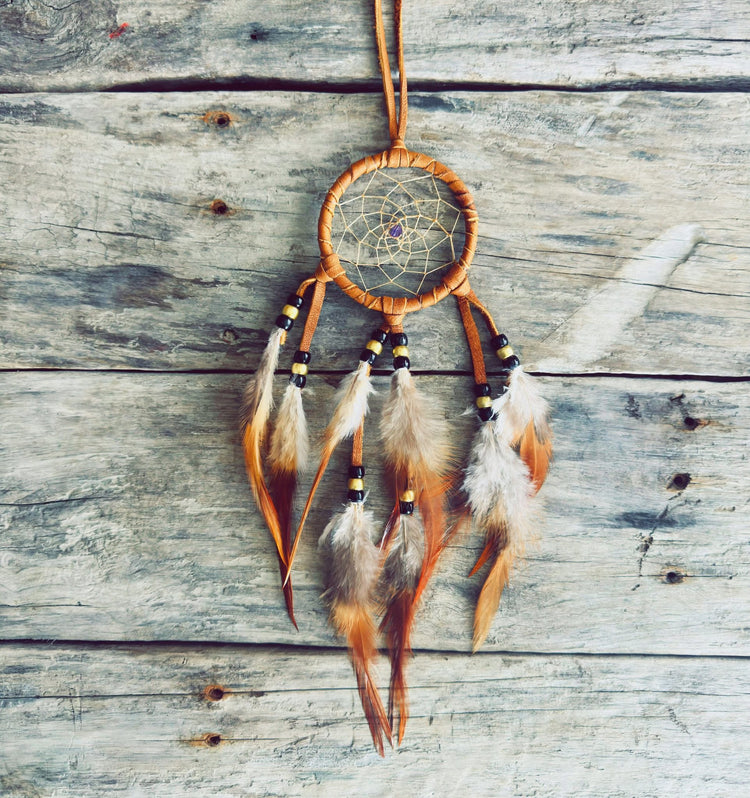The Web of Dreams: The ancestral legend of the Dream Catchers

The legend of dreamcatchers , also known as dreamcatchers, has its roots among the indigenous peoples of North America, most notably the Ojibwe. This story, while varying slightly from tribe to tribe, shares common themes of protection, wisdom, and spirituality, conveying a universal message throughout the ages.
Origin of dream catchers
Long ago, an old Ojibwe sage named Lakota received a profound insight during meditation. In this vision, Iktomi, the wise spirit in the form of a spider, appeared and spoke about the cycles of life and the invisible forces that influence our dreams. Iktomi took a willow branch and began to weave a web around it, using beads and natural feathers. As he weaved, he explained that the web would allow good dreams to pass through the center and slide gently down the feathers to the sleeping person below, while bad dreams would be caught in the web and disappear. 'dawn.
The transmission of the legend
Impressed by this vision, the Lakota sage shared this teaching with his people. Dreamcatchers were thus created to protect sleepers, especially children, from nightmares and malicious spirits. Hanging above beds and cradles, these sacred objects ensure peaceful nights and pleasant dreams.
Diffusion and meaning of dream catchers
The legend of dreamcatchers spread among different indigenous tribes and nations, including the Innu. Each community incorporated their own symbols and materials into the making of dreamcatchers , but the essence of the legend remained the same: a sacred object to filter out bad dreams and protect the sleepers.
Dreamcatcher manufacturing
Dreamcatchers are often made during ceremonies and rituals. Natural materials such as willow, beads, and feathers symbolize connection with nature and ancestral spirits. These elements are carefully chosen to enhance the protective power of the dreamcatchers.
The Dream Catchers Today
Today, dreamcatchers are recognized around the world as symbols of protection and spirituality. They continue to be crafted by indigenous artisans, preserving ancient traditions and teachings. Given as gifts to wish for peace and protection, dreamcatchers remain a source of inspiration and connection with ancient wisdom.
Enhance your well-being and interior decoration with handcrafted dream catchers, symbols of tradition and spiritual protection. Discover our authentic dream catchers on our site to bring a touch of serenity and natural beauty to your living space by visiting our website .
Every piece embodies a spiritual journey of harmony and gratitude.Creations inspired by the spirit of legends
Each piece is handcrafted on Nitassinan by Ilnu artisan Dave Verreault-Thisselmagan, carrying the energy of tradition and nature.



